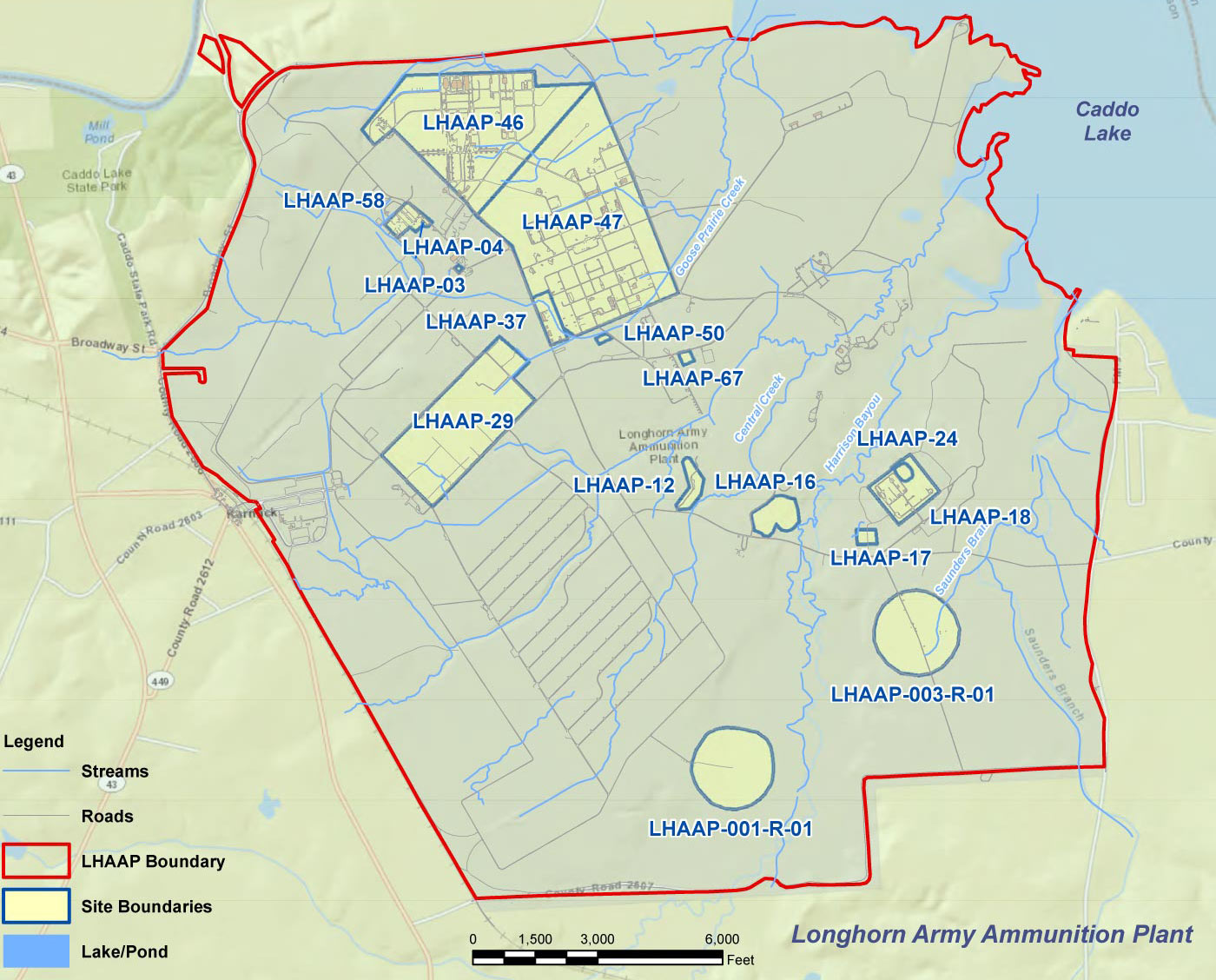Longhorn Army Ammunition Plant
Environmental Restoration Program
LHAAP-001-R-01
Site Description/History
LHAAP-001-R-01, also known as Site 27, South Test Area/Bomb Test Area is approximately 79 acres located southeast of Avenue P and the magazine area at the end of 70th Street, near the southern boundary of LHAAP. The LHAAP-001-R-01 site was constructed in 1954 and used by Universal Match Corporation for testing M120A1 photoflash bombs produced at the facility until about 1956. The bombs were tested by exploding them in the air over an elevated, semi-elliptical earthen test pad. The bombs tested were 150-pound M120/M120A photoflash bombs filled with photoflash powder and containing a black powder booster charge and a timed nose fuze.
During the late 1950s, illuminating signal devices were also demilitarized within pits excavated in the vicinity of the test pad at the site also known as the suspected open burn/open detonation area. During the early 1960s, leaking production items such as XM40E5 “button bombs” may have been demilitarized by detonation at LHAAP-001-R-01 or the Ground Signal Test Area ( LHAAP-003-R-01).
Remediation Activities
LHAAP-001-R-01 was identified as a munitions and explosives of concern ( MEC) based on the visual confirmation of MEC.
A MEC Removal Action ( RA) was performed in 2009, where the entire area underwent digital geophysical mapping and investigation, after which all surface MEC was removed, and the open burn/open detonation area MEC was removed to depth of instrument detection. Upon completion of the Removal, restricted activities signage was installed, warning of MEC danger, no digging and contact information. Land Use Controls ( LUCs) and an educational program consisting of pamphlets and a video explaining the 3Rs (Recognize, Retreat, Report) were put in place. The Removal Action ( RA) was followed by a Proposed Plan ( PP) and Record of Decision ( ROD).
Contaminants of Concern
No COCs – Limited groundwater sampling is being conducted at the site to ensure perchlorate is not a COC.
Current Phase
The current phase consists of limited groundwater monitoring to confirm perchlorate levels are below the TRRP Tier 1 Groundwater Residential PCL, implementation of LUCs, and Five-Year Reviews because explosive hazards may remain at the site that do not allow for unlimited use and unrestricted exposure.
Future Phase
Limited groundwater monitoring, implementation of LUCs, and Five-Year Reviews comprise future activities at the site.
